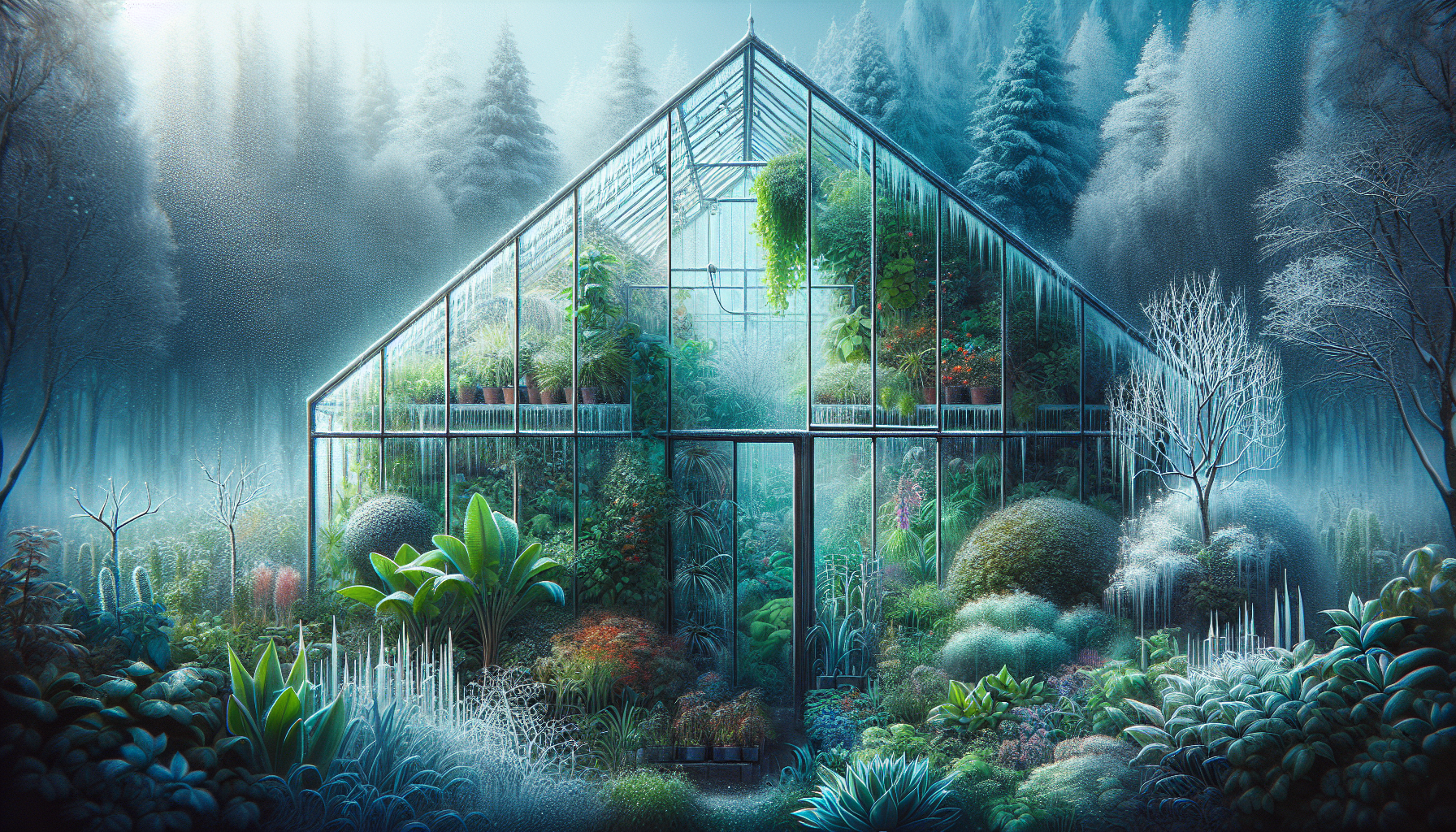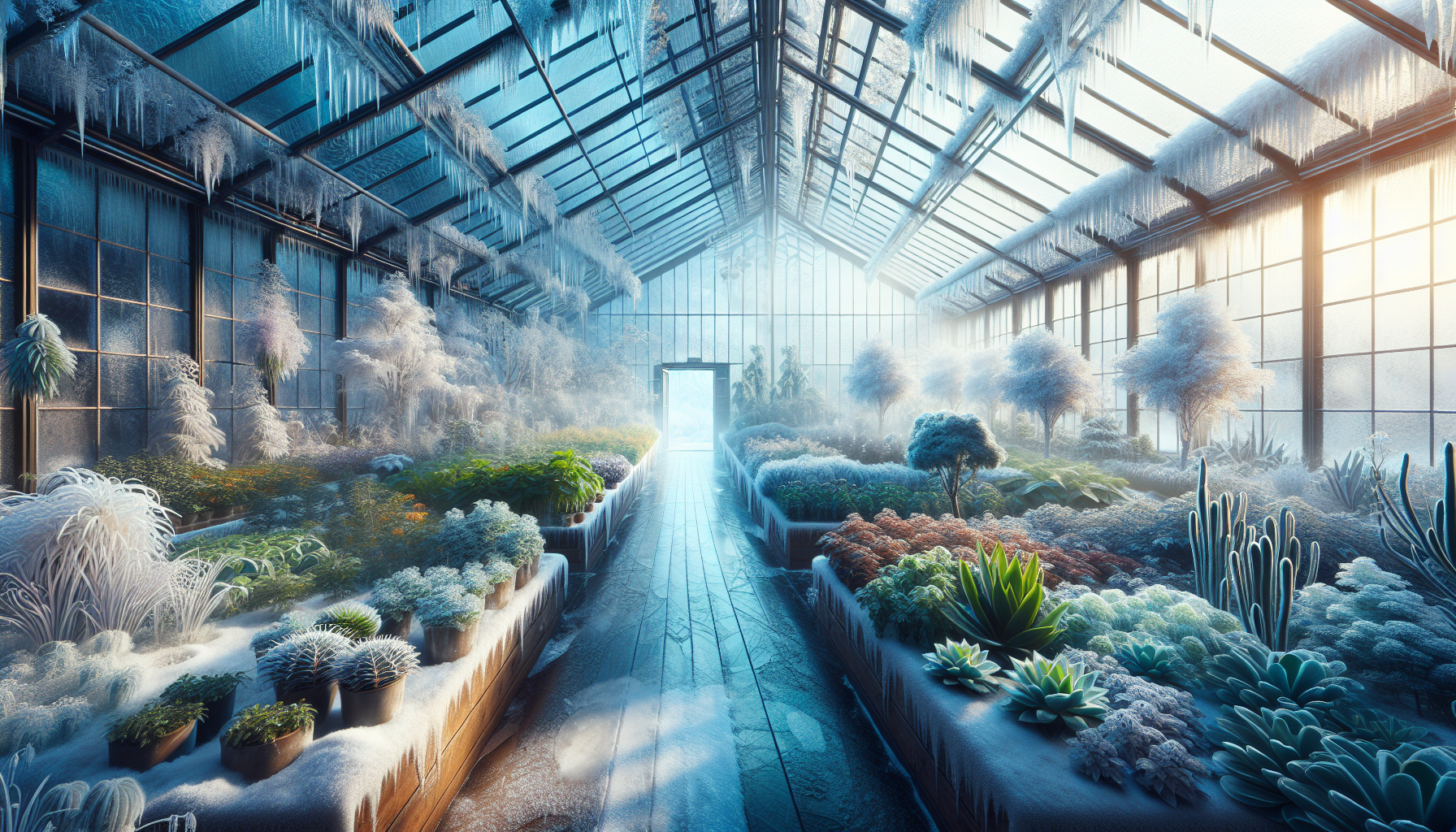
Embarking on a journey into the art of cold greenhouse gardening promises both challenges and rewards. This article is your guide, equipped with expert advice, practical tips, and tried-and-true methods to successfully grow even the most delicate of plants in a chilly environment. You’ll learn how to regulate temperature, which plants thrive in cold conditions, and how to maintain optimal growth throughout the colder months. Imagine, you in the middle of winter, being able to pluck fresh, vibrant greens right from your own cold greenhouse. That’s the power “Mastering the Art of Cold Greenhouse Gardening” aims to bestow upon you.

Understanding Cold Greenhouse Gardening
greenhouse gardening is one of the most rewarding aspects of horticulture, but when the colder months start to roll in, it can pose a new level of challenge. Let’s delve into the world of cold greenhouse gardening and explore techniques that can help you unlock the true potential of your greenhouse during the cool season.
Defining a Cold Greenhouse
A cold greenhouse, in contrast to a heated greenhouse, does not use artificial sources of heat to maintain growing conditions. Instead, it relies solely on the sun’s natural rays to heat the inside of the structure. The greenhouse itself functions as a protective barrier, shielding plants from adverse weather conditions, while still ensuring plenty of sunlight exposure.
Benefits of Greenhouse Gardening in Cooler Climates
Greenhouse gardening in cooler climates can be advantageous for several reasons. Firstly, it can extend your growing season, allowing you to grow and harvest plants even in colder months. Secondly, it provides a controlled environment which can minimize issues with pests and diseases. Lastly, greenhouses can allow for a wider variety of plant choices, including species that may not typically thrive in your outdoor climate.
Challenges and Considerations
While cold greenhouse gardening is beneficial, it’s not without its challenges. Temperature fluctuations can be drastic between day and night, while frost and snow can increase the need for insulation. Additionally, choosing suitable plants that can thrive in cooler conditions requires a bit more research and planning. It’s important to understand these factors to successfully navigate greenhouse gardening in a colder climate.
Design and Structure of Cold Greenhouses
Implementing well-thought-out designs and structures can significantly improve the function and productivity of your cold greenhouse.
Key Features of a Cold Greenhouse
Notable characteristics of an effectively designed cold greenhouse include sturdy structure, abundant light exposure, and functional ventilation system. Inclusion of thermal mass materials – objects that absorb heat during the day and release it during the cooler night – can be another strategic addition.
Materials and Insulation Options
When constructing a cold greenhouse, your material choices can make a difference. Glazing materials like polycarbonate, polyethylene and glass can provide maximum light penetration while offering varying levels of insulation. Using bubble wrap or horticultural fleece can further improve insulation during the peak of winter.
Siting and Orientation for Maximum Sun Exposure
Proper siting and orientation ensures your greenhouse receives the maximum benefits of natural sunlight throughout the winter months. North-south orientation can prove to be best for summer production, while east-west orientation can provide more sunlight during winter.
Climate Control in a Cold Greenhouse
Even in a cold greenhouse, maintaining specific climate aspects effectively can yield robust and healthful plants.
Managing Temperature Fluctuations
Installing a maximum-minimum thermometer can help you keep a check on temperature swings. During extremely cold nights, you might need to use horticultural fleece or bubble wrap for additional insulation. Likewise, on sunny days, venting can help prevent overheating.
Ventilation Strategies
Good ventilation aids in preventing fungal diseases and provides fresh air for photosynthesis. You can achieve this by installing vents at the roof and sides of the greenhouse. Manual or automatic vent openers can ensure proper air circulation.
Humidity Control and Its Importance
Maintaining an optimal humidity level is crucial to prevent plant diseases and ensure healthy growth. You can control humidity levels by adjusting ventilation, using moisture-absorbent materials, or installing a dehumidifier.
Winterizing Your Greenhouse
The arrival of winter requires specific adjustments to ensure the longevity of your plants and the efficiency of your greenhouse.
Preparing for the Cold Season
The preparation for winter should ideally start during fall by cleaning the greenhouse, inspecting and repairing any damages, and adding fibrous materials to improve insulation.
Additional Insulation Methods
Applying bubble wrap to the interior of the greenhouse can significantly enhance its ability to retain heat. Using straw bales around the perimeter or burying your greenhouse partially into the ground can also be excellent winter protection strategies.
Winter Maintenance Routines
Maintenance routines in winter include routine checks for frost damage, ensuring adequate moistness levels, and monitoring temperature fluctuations.

Plant Selection for Cold Greenhouse Gardening
Selecting the right plants can significantly affect your success with cold greenhouse gardening.
Choosing Cold-Hardy Plants
Focusing on cold-hardy plants that can thrive in low temperatures is crucial. This may include leafy greens such as kale or spinach, root vegetables like carrots, or herbs like rosemary.
Seasonal Planting Schedules
Planting schedules should be adjusted to the cooler conditions. Starting your seeds earlier and planning for longer growth periods can optimize your yield.
Companion Planting and Crop Rotation
Using companion planting and crop rotation strategies can help maximize space, increase yield, and enhance soil fertility.
Soil and Water Management
Managing the soil and water effectively can significantly affect the health and productivity of your plants.
Maintaining Soil Health in Colder Temperatures
Maintain the soil health by adding organic matter and compost during the fall. Choose a soil mix designed for greenhouse use, as it often offers a lighter, more aerated composition.
Watering Techniques and Conservation
Watering plants in colder conditions requires a delicate balance. Over-watering can lead to frost damage, while under-watering can cause dehydration. Watering early in the day can ensure adequate absorption before the temperature drops in the evening.
Mulching and Its Benefits
Mulching can offer multiple benefits such as preserving moisture, adding nutrients to the soil, and providing an extra layer of insulation.
Extending the Growing Season
With a few tricks and techniques, you can extend the growing season and enjoy fresh produce year-round.
Advance Planting Methods
Starting seeds indoors and then transferring them to the greenhouse can give your plants a head start. Protective cloches or plant covers can also provide an additional layer of protection and warmth.
Using Plant Covers and Blankets
Using plant covers, blankets, or row covers during freezing nights can help provide extra warmth and protection for your plants, facilitating their growth during colder months.
The Role of Microclimates
By positioning plants strategically within your greenhouse, you can take advantage of microclimates. Areas near the door tend to be colder, while spots in the center or near thermal mass objects can be warmer, so place your plants accordingly.
Pest and Disease Management in the Cold
Even in colder months, pests and diseases can pose challenges. However, these can be effectively managed with consistent observation and timely intervention.
Identifying Common Pests and Diseases
Identifying the common pests and diseases in cold conditions can aid in early detection and treatment. Regular inspections for signs of fungus, rot, or pests should form a part of your maintenance routine.
Preventive Measures and Treatments
Keeping the greenhouse clean, ensuring proper ventilation, and managing humidity can prevent most pest infestations and diseases. Introducing beneficial insects can help manage pests without resorting to harsh chemicals.
Organic Pest Control Strategies
Organic pest control strategies focusing on biological control, such as the introduction of beneficial insects or the application of organic sprays, can be an effective and sustainable measure against invaders.
Tool and Equipment Essentials
Having the right tools can make your tasks easier, efficient, and more enjoyable.
Must-Have Tools for Cold Greenhouse Gardeners
Essential tools for the cold greenhouse gardener’s tool kit include a thermometer, moisture meter, pruning tools, watering cans, and seed trays.
Equipment Maintenance and Storage
Maintaining your tools and storing them properly can prolong their life and efficiency. Cleaning tools before and after use, oiling to prevent rust, and storing in a dry, protected location can ensure they remain in top condition.
Innovative Tools to Simplify Tasks
Innovation has brought several tools that can simplify tasks and boost productivity. Self-watering planters, thermal mass heaters, and automatic vent openers are just a few examples.
Sustainability Practices in Greenhouse Gardening
Embracing sustainable practices can ensure your gardening endeavors respect and protect the environment.
Recycling Water and Minimizing Waste
Utilize rainwater harvesting systems for watering needs and choose reusable pots and seed trays to cut down on plastic use.
Organic Fertilization Methods
Organic fertilizers, made from composted plant and animal waste, can provide your plants with the nutrients they need while enriching your soil and minimizing chemical use.
Using Renewable Energy Sources
Implementing renewable energy sources such as solar or wind power can run your greenhouse operations in a sustainable and cost-effective manner.
Mastering the art of cold greenhouse gardening might take some trial and error but the rewards you’ll receive in terms of fresh, healthful produce and a thriving, beautiful garden are more than worth the effort. Happy gardening!

